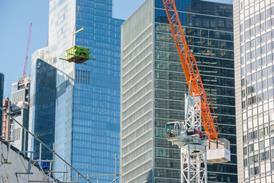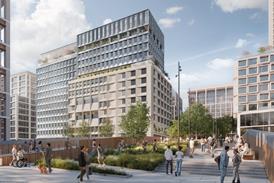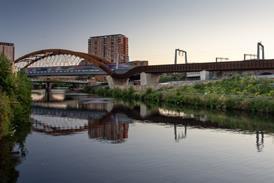Change is coming, says Andrew Mellor as he sheds some light on a complex picture

Last week the Labour Party attempted to amend the Fire Safety Bill to include the recommendations from phase 1 of the Grenfell Tower Inquiry. The proposed amendments were voted down by the government which has understandably caused much anger within the Grenfell community and Labour Party.
The amendments included the requirements for residential building owners to share information on the building’s external wall construction with the Fire and Rescue Service (FRS) and undertake regular inspections of lifts and entrance doors, as well as mandating that landlords share evacuation and fire safety instructions with residents.
The Fire Safety Bill is concise: it proposes that if a building contains two or more dwellings that the building’s structure and facades, apartment entrance doors and common areas fall under the Regulatory Reform (Fire Safety) Order 2005. It further defines that windows and doors in the external walls and attachments such as balconies are also included.
The Grenfell Tower Inquiry phase 1 recommendations related primarily to existing residential buildings to protect residents but they are equally applicable to new residential buildings.
With regard to new buildings the recommendations can of course be implemented via changes to Building Regulations. Indeed at least one already has: wayfinding signage.
For existing buildings, any new requirements have to be introduced via new or amended existing legislation as the Building Regulations cannot be applied retrospectively. Only when new building work is being undertaken to the building do the regulations apply and there are very few consequential improvement requirements that mean elements have to be upgraded to current requirements. One example is office-to-residential conversions, where the resulting façade must meet the combustible materials ban requirement where the building is of the relevant height.
The fact that changes are not being implemented more quickly will be frustrating to many but appropriate change takes time
What seems either to have been overlooked by the Labour Party or not properly reported is that the Home Office is currently consulting on changes to the current Fire Safety Order 2005 which includes incorporating the phase 1 inquiry recommendations. The proposals set out duties for the “responsible person” of existing residential buildings (most likely to be the building owner) which include those stated above as proposed by the Labour Party, as well as:
- · digital fire plans to be provided to the FRS;
- · wayfinding signage for buildings above 11m;
- · evacuation plans in electronic format to be provided to the FRS;
- · personal emergency evacuation plans in electronic format to be provided to the FRS;
- · reporting lift failures and defects to the FRS.
Proposals for the frequency and extent of fire door checks are set out in the consultation document. Frequency relates to building height: the taller the building the more frequent the proposed checks.
It would seem, therefore, that fire risk assessments to facades and fire doors could not be required through amendments to the Fire Safety Order and that these needed an Act of Parliament to change the wording of the order. By contrast the majority of the phase 1 recommendations can be incorporated into the order via direct changes to it.
It is very difficult to keep up with the government’s current consultations, draft legislation and already-introduced building safety legislation and we will see much more of it over the next few years.
The fact that changes are not being implemented more quickly will be frustrating to many but appropriate change takes time. We must ensure that the changes are well considered, implementable and do not cause unintended consequences. There are many in government and in industry who are working hard to implement change as quickly as possible, with the ultimate aim of improving the safety of residents in apartment buildings.
Postscript
Andrew Mellor is Building Design’s regs columnist. He leads the development consultancy team at PRP. The practice has been advising MHCLG and conducting research around policy and building regulations
















1 Readers' comment